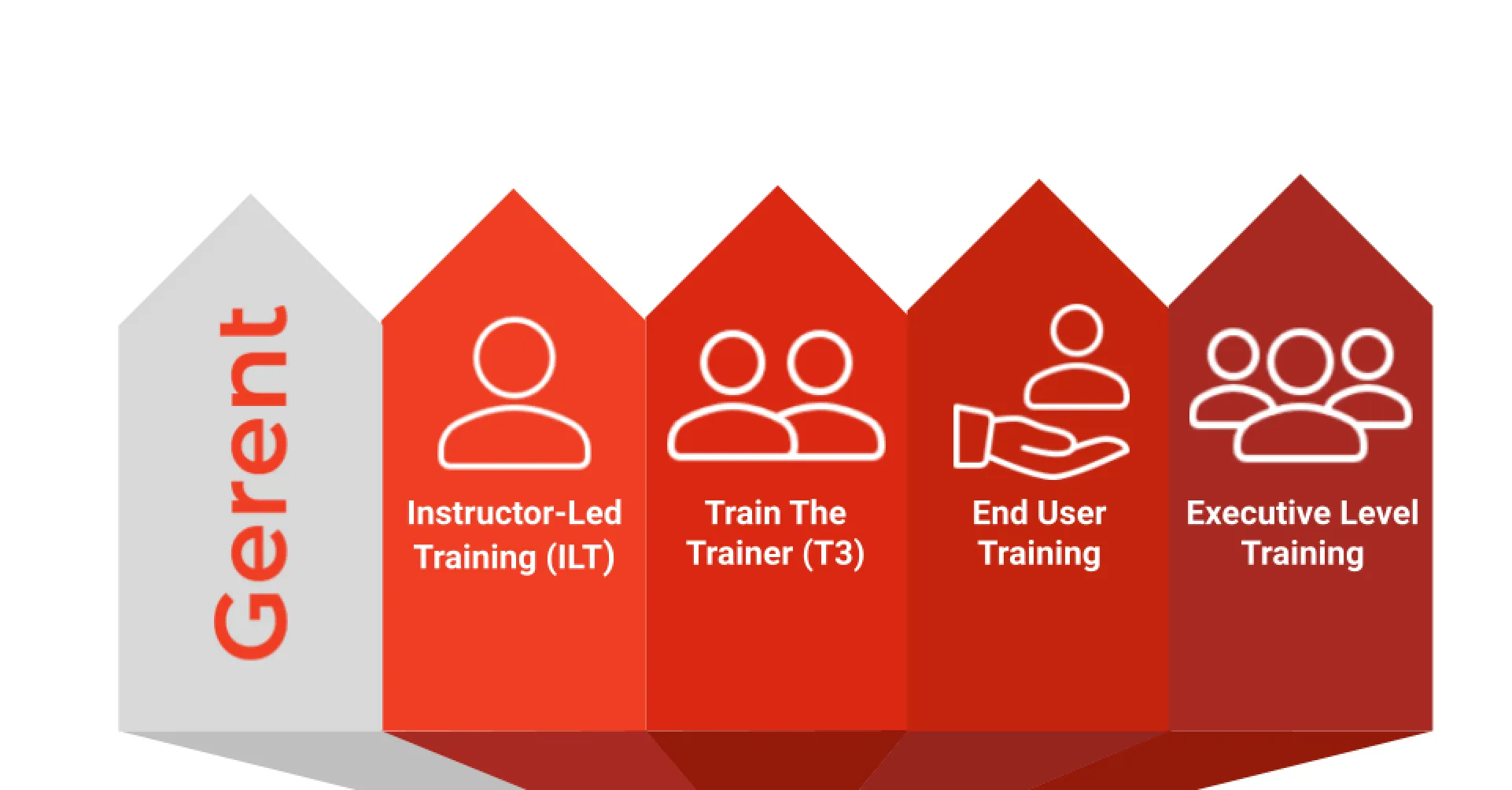Why Invest In Technology Training?
It’s no overstatement to say that change can be extremely profitable. Per recent research from McKinsey, the top 10% of digitalized companies earn an incredible 80% of their industries' digital revenues. However, while promising, these improvements are far from guaranteed — as research also demonstrates that 70% of large-scale initiatives never reach their goals.
At the core of this issue is incomplete training.
A successful implementation is a team effort, as leaders will depend on the people using those systems to ensure they get the most bang for their buck. Unfortunately, teams aren’t always appropriately equipped to follow through and deliver the results leaders expect.
Change is an iterative process; first, companies implement a CRM that can provide the immediate support team members need to facilitate their day-to-day processes. Then, as employees use the new system, they naturally discover other areas that can be optimized by the CRM, vulnerabilities that might require additional tools, and more.
However, employees cannot discover new areas for growth unless they are knowledgeable about how the software they’re using works.
As Antonia Moore, Gerent’s Senior Salesforce Business Analyst, puts it, “Unfortunately, it’s incredibly common for those using Salesforce systems to receive 2 to 4 hours of basic training before being thrown into things. These employees barely get the information they need to use the system properly, and there’s this prevailing attitude of ‘they’ll make it work,’ or ‘it only needs to deliver for this particular project; they don’t need training.’”
“As a result,” Moore continues, “these people feel like they’re trying to cram a square peg into a round hole. They may power through and complete the job, shaving off the corners and making things work for a time: but the full potential of the implementation is never reached, and more often than not, those implementations fail.”

The Concrete Benefits of Technology Training
Technology Training: Teaching new users how to use new systems/platforms after implementation. The development of technology training programs may include group training sessions, creating walkthroughs in-application, or asynchronous individual learning.
Leaders who want to get the most out of their investment should value technology training as a necessity. Technology training provides several concrete benefits that translate to a more successful implementation with long-lasting benefits for the organization. Let’s break some of them down.
Spotting Vulnerabilities and Areas of Potential Growth
An employee who knows the system can spot where it’s working best, where it may need additional support, and places where it is not currently reaching its full potential. Unlike team members who use the system to bare minimum functionality, trained employees will deliver better insights and help ensure the long-term success of your implementation.
Better Consumer Experiences
When inefficiencies undermine operations, the one who suffers most is ultimately the consumer. As untrained employees struggle with new systems, they inherently create new operational hurdles. Employees do a poor job, the software can’t deliver, and customers are inevitably disappointed.
Trained employees can use their new CRM to the fullest extent, converting shoppers into customers for life by providing positive, brand-unique experiences.
Boosting Adoption and Driving Long-term Improvement
No leader can stomach the thought of investing in a massive transformation, only for their employees to not know how to use the new systems — or worse, fall back on old, inefficient business methods.
Unfortunately, without proper training, low adoption is much more likely. Employees will wrestle with new systems and either barely take advantage of them or give up entirely.

Technology training ensures that everyone is on board with the new system, knows how to use it, and that it replaces its inefficient predecessors completely.
To learn how to create an effective training program, check out this episode of Transformation @ Work, where Antonia Moore sits down with host Jeff Stormer.
Empower Your Team to Reach Their Full Potential
Not investing in ongoing education makes it harder for employees to adapt to change. Technology training is any organization's best bet at efficiently establishing a firm foundation for transformation while simultaneously boosting employee development.
“A team is only as strong as its ‘weakest’ link,” Moore explained, “and so organizations need to focus on the employees who look at their new software and have no clue what they’re doing. They need to enroll these employees in training programs that can support them and impart such a thorough understanding of the system that they can train others in times of change management.”
“Only then,” Moore finishes, “can they make sure that not only is their business supported by a system that can eliminate inefficiencies, but a team that understands and maximizes the value of that system.”
To learn more about technology training offered by Gerent and how to structure a successful training program, visit our website or give us a call.










